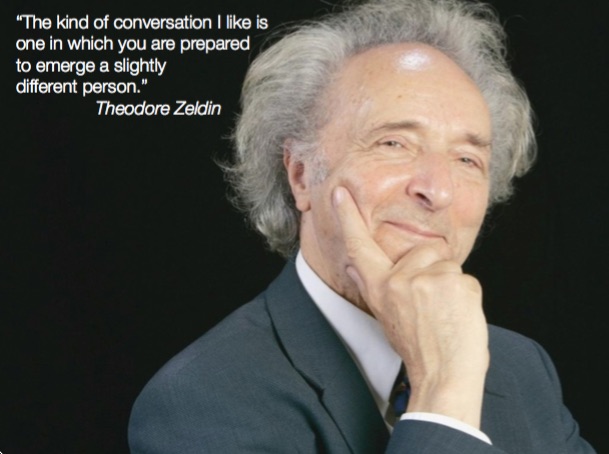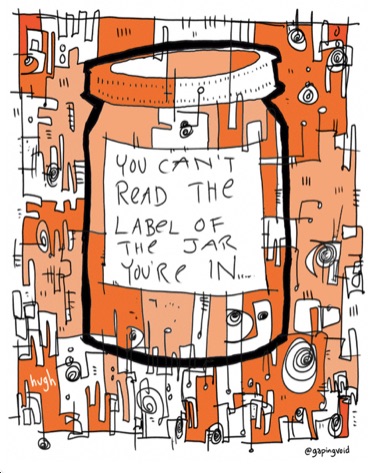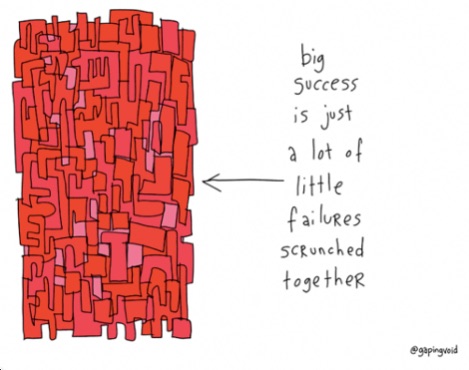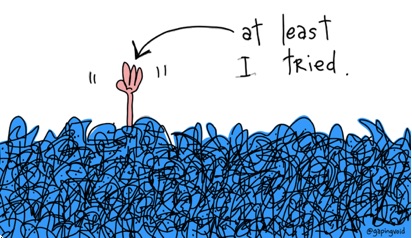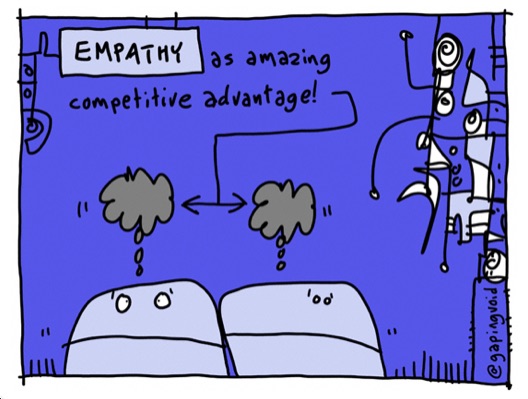Asking for ‘Help!’ and Empathy
The title of this post is part II of a piece of the same name by friend and colleague Chris Corrigan over here. And what started as a piece about ‘Asking for Help’ … it ended up somewhere else!
Ever since watching another colleague, Gary Hirsch, deliver his entertaining Tedx talk on Collaboration, I’ve turned the act of “Asking for Help” into an activity at many gatherings that I design and facilitate. Gary suggests that one of simplest and most effective ways to kick-start collaboration is to simply ask for help. It seems bleedingly obvious because we all, often without knowing it, do it every day. But why, in some contexts, DON’T we?
Chris offers some more on this and I like this quote from his post:
“I value people that can do that. I think the ability to ask for help is significantly devalued in our society, where status and competence hinge on having the right answer. We all probably have stories about times we pursued the “right answer” well past the point of its usefulness, because the vulnerability of not knowing was a bigger risk that screwing something up.”
When groups come together and ask the perennial question, “How can we work together (collaborate) better? All sorts of safe, well-worn collaboration theories, methods and platforms get suggested – “Let’s establish a Working Group!” Gasp! “What about a Facebook Group?”.
Rather than tackle the collaboration dilemma directly, I prefer to setup group processes where people actually experience collaboration on something that is useful and relevant. This light approach is a little oblique and approaches the practice sideways. It’s is mashup of a few different processes and, in the right context, it works. I do it slightly differently each time and I’ve never actually planned to use it before an event … it just emerges when needed. Here’s a snapshot on my thinking that sits behind the process. My next post will detail the how.
Chris suggests that a degree of vulnerability is needed by the person asking for help. Yes, AND … those offering advice or a response also need to be willing to say “I don’t know”.
What’s Brain Science got to do with it?
Like I said earlier, learning comes through direct experience of something, like when we play games and learn music and technique in sports. Our brains are wired in ways that make experience and emotion central to learning. Imagine trying to learn to surf by just talking about it and theorising? Well, learning to collaborate is the same … you gotta feel it dude! And this little video shows how multiple parts of the brain are activated when playing music.
To provide opportunities for direct experience, I often use activities from the world of Applied Improv (Theatre), or structured games like Paying For Predictions. These experiences live with participants for years and past participants approach me, sometimes years later, about the impact “that game we played at the Zoo!” had on their learning and world view. These processes are not magic bullets and need to be applied in the right context. But, they do cut through the cerebral noise of powerpoint presentations and traditional methods.
What’s empathy got to do with it?
“Empathy drives connection”, suggests Brene Brown at the beginning of this little clip. “Empathy is feeling with people” … “as sacred space where they find themselves in a dark hole saying ‘I’m stuck!’, ‘I’m overwhelmed’.” It’s a place where people are calling out for help. This video deals with emotions that go deeper than the kinds of things that workshop participants explore together – such as asking for help on how to better involve a local community in decision making. But the same rules apply across different contexts.
Group processes that support an empathic connection between those asking for help and those offering help is central here. To provide the kind of help that people really need, a degree of vulnerability is required. The helper needs to connect with something in themselves, in order to truly connect with the needs of the person asking for help. Brene suggest 4 things that are needed for such an empathic response:
 1. Perspective Taking
1. Perspective Taking
2. Staying out of judgement
3. Recognising emotion in other people and …
4. Communicating that recognition of emotion
At the end of the video Brene hits on something that I think is crucial here. She says that when people ask for help, our automatic response to is try and make things better. So, our responses often involve jumping straight to solutions. We judge the situation and, without knowing it, fall into the trap of sounding like we have the answer. I’m guilty of this, particularly in community life!
Brent ends this video with “Rarely can a response make something better. What makes something better is connection.” This reminds me a lot about a concept that Johnnie Moore introduced me to -> “Notice More, Change Less”. Applied to the help giving situation the ‘notice more’ bit encourages us to simply pay attention to the other person and to our own response or reaction. The ‘change less’ bit is about avoiding the pitfalls of advice giving in an attempt to make the situation clearer or better.
In Sum …
I had intended to describe a group process on asking for help … but i’ve written enough for now. The next post will explore the processes I’ve been experimenting with.
Lastly, I’ve got some quotes and cartoons (I love Hugh McLeod at GapingVoid!) that I use to support the kind of thinking that is needed in this asking for help context. There is nothing new in these ideas and they are applicable to setting up a wide range of dialogue processes – where ‘thinking together’ is needed.
